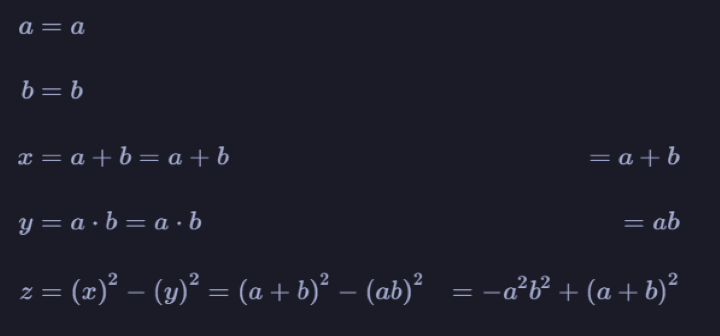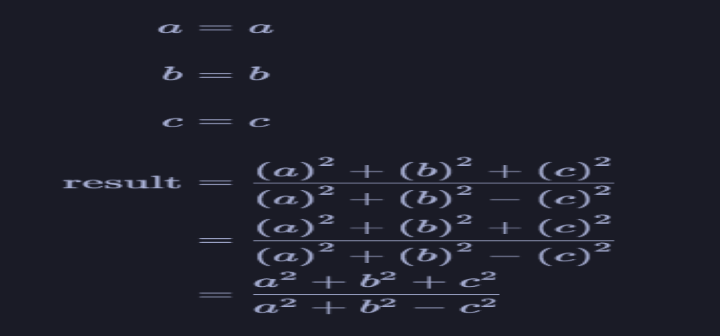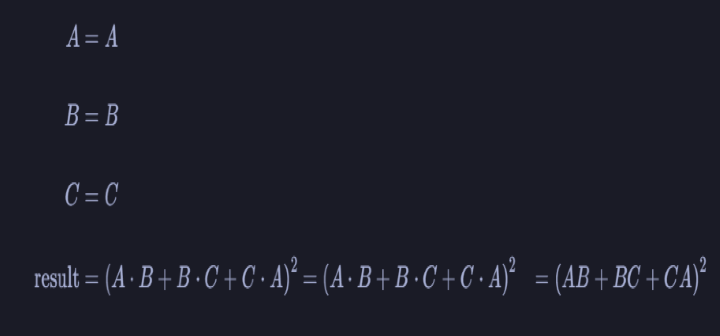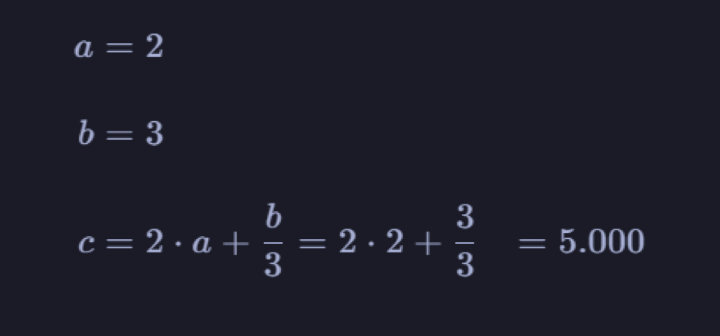
 Data Structure
Data Structure Networking
Networking RDBMS
RDBMS Operating System
Operating System Java
Java MS Excel
MS Excel iOS
iOS HTML
HTML CSS
CSS Android
Android Python
Python C Programming
C Programming C++
C++ C#
C# MongoDB
MongoDB MySQL
MySQL Javascript
Javascript PHP
PHP
- Selected Reading
- UPSC IAS Exams Notes
- Developer's Best Practices
- Questions and Answers
- Effective Resume Writing
- HR Interview Questions
- Computer Glossary
- Who is Who
HandCalcs Module Python
HandCalcs is a Python module for automatic Latex report generation from Python code with minimal coding effort. HandCalcs uses Python's symbolic math library to track calculation history and translate it into LaTeX code. It can be used to automatically generate mathematical equations in LaTeX format. This module is a must-have tool for any Python developer who frequently uses LaTeX for technical documentation.
Syntax
To install HandCalcs, use the following command in the terminal or command prompt ?
!pip install handcalcs
To use HandCalcs in your Python code, first import the handcalcs.render function. This function is used to create a LaTeX report from the Python code. To begin, create a cell with the Python code you want to use, along with any relevant LaTeX commands, and then run the handcalcs.render function.
Algorithm
Define your mathematical expression using standard Python syntax. You can use variables, functions, and mathematical operators such as addition, subtraction, multiplication, and division.
Wrap your mathematical expression inside a Handcalcs cell by enclosing it in triple braces (i.e., {{{}}}).
Use the Handcalcs render function to create a report that includes the hand-written-style calculation. For example, you can use the code "handcalcs_rendering('report_name.tex', 'report_template.tex')" to create a report named "report_name" using the LaTeX template file named "report_template".
Compile the LaTeX report using a LaTeX compiler such as TeX Live or MiKTeX to generate the final PDF report.
Review and refine the report as needed, making adjustments to the code and template until the desired report format is achieved.
Code
import handcalcs.render
Run the following in the next Jupyter Cell.
Example 1
%%render
a = Symbol('a')
b = Symbol('b')
x = a + b
y = a * b
z = x**2 - y**2
Explanation
This example shows how symbolic math calculations on variables can be carried out using HandCalcs. The two variables a and b are defined, and the variables x and y are created through addition and multiplication processes. The third variable, z, which is the outcome of a more difficult algebraic equation, is then calculated using x and y.
Output

Example 2
%%render
a = Symbol('a')
b = Symbol('b')
c = Symbol('c')
result= (a**2 + b**2 + c**2)/(a**2 + b**2 - c**2)
Explanation
The three variables a, b, and c are defined here as well and are used to compute an outcome. The final step involves using HandCalcs to show the expression in LaTeX style.
Output

Example 3
%%render
A = MatrixSymbol('A', 2, 2)
B = MatrixSymbol('B', 2, 2)
C = MatrixSymbol('C', 2, 2)
result = (A*B + B*C + C*A)**2
Explanation
This exercise illustrates how to manipulate matrices symbolically using HandCalcs. A, B, and C, three matrix factors that are defined, are used to compute the outcome, and the final equation is shown in LaTeX style.
Output

Example 4
%%render a = 2 b = 3 c = 2*a + b/3
Explanation
This illustration shows how to use HandCalcs to carry out fundamental numerical arithmetic tasks. It sets the three variables a, b, and c and applies mathematical operations to determine the resultant number c
Output

Conclusion
We explored the HandCalcs module in Python and its various features. We learned how to install HandCalcs, import the handcalcs.render function, and define HandCalc functions using the @handcalc decorator. We then created a sample script that showcases some of the main functions of HandCalcs. Overall, HandCalcs is a powerful tool for anyone who frequently uses LaTeX for technical documentation. With HandCalcs, you can automate the generation of mathematical equations and simplify the process of creating technical reports and documentation.

